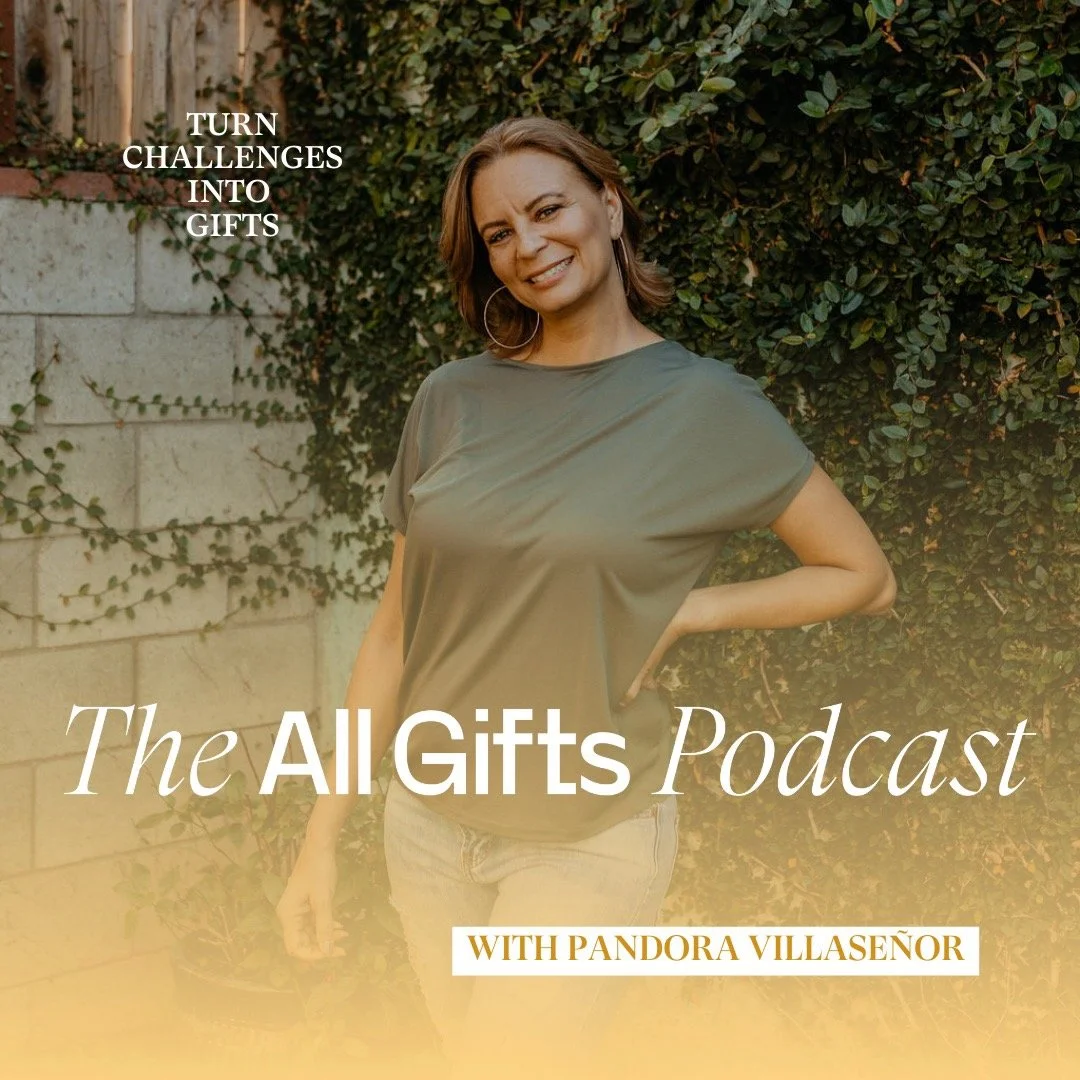Episode 35: The Key to Breaking Cycles
TUNE IN AND SUBSCRIBE: APPLE PODCASTS I SPOTIFY I STITCHER
At All Gifts, we talk about being cycle breakers, about transforming our pain into gifts. We talk about this in practical ways that you can apply to your everyday life.
Before you can transform your pain into gifts, like strength, resilience, and compassion, you must face and break the negative or dysfunctional cycles in your life. Then, you must create new, healthy cycles.
Breaking old cycles and creating new ones starts with having the desire to change or to “be better” in some way.
This episode is about how to take yourself from a desire to change to actual results.
I break down how to become intentional with your desires and turn them into action. This starts with effective goal setting.
Anyone who knows me knows I love goal setting. I have annual goals, broken into quarterly, monthly, weekly, and even daily goals.
But I wasn’t always like that. There was a time when I procrastinated and avoided setting goals. It was so frustrating. Things are already hard for cycle breakers. Not having clear goals made it even harder. Once I embraced this fact, I got a hit of what it felt like to plan and crush my goals. Then, I became addicted.
Trust me, once you start setting and achieving goals, you will be addicted too! Then watch as you transform each crazy cycle into new, healthy trajectories.
So, where do you start? How can you get addicted to setting goals and breaking cycles in your life?
I use the acronym R.I.S.E.
1. Reflect – spend time processing and reflecting on the area you want to change. We can’t change negative cycles until we’ve identified them. My journal prompts for cycle breaking are a great guide for this.
2. Imagine – visualize what your life will look like with the cycle broken. How will it feel? Hold onto these images for motivation to help you stay focused on your goal.
3. Specific – commit to breaking the cycle by creating a SMART (Specific, Measurable, Attainable, Relevant and Time-bound) goal.
4. Engage – seek out support to help you stay committed. This can be a therapist, friend, pastor, family member, or community group.
Listen to previous episodes of this podcast or read my blog for examples of breaking generational cycles of drug addiction, alcoholism, codependency, and poverty in my life.
Let’s walk through a recent example.
I’ve never been sporty. I was the last person picked for the team. I ran from the volleyball. I was lanky and weak. By the time I was thirteen I was 5’7” and eighty-five pounds. I hated sweating and doing anything active. As I grew up, I relied on being naturally thin to get by without exercise.
But in my forties, I started waking up with a sore neck or back a couple of times a month. I went to chiropractors, and they’d always ask if I exercised. Well, no, I couldn’t even imagine exercising.
Around that time, my mother, who was in her early sixties had a stroke. Her mother, my grandmother, had a stroke in her fifties. Both women were debilitated by this. I didn’t want that for myself. I wanted to live a healthy, stroke-free life.
I started to envision where this no exercise trajectory was leading. I asked myself did I want to live in pain? Did I want to manage that pain with medications or surgeries? Which was worse, the pain of doing nothing or the pain of exercise? I began to imagine that the short-term pain of exercise would help me avoid a future of debilitation.
I identified that I needed to create a new healthy cycle of exercise. At first, I had a vague goal of “to exercise more.” As you can imagine, that didn’t work. I’d work out for a day or two and then quit. Once I quit it took so much momentum to start again.
It wasn’t until I came up with the SMART goal: “do CrossFit three times a week on Mondays, Wednesdays, and Fridays” that I was able to create this important new habit. I’ve now been exercising at least three times a week for two years.
You see how having a SMART goal was much more effective than a vague desire to just exercise more?
The last point I’ll make about breaking and creating new, healthy cycles is support. It helps to have a supportive community around you. For me, that’s my husband who enjoys fitness, my two closest friends who work out with me, and a friendly gym that’s fun and easy to work with. Most of all, it’s the spirit of God within me that reminds me I can do all things through Christ who strengthens me (see Philippians 4:13).
Resources:
Full Focus Planner: I spent years looking for a planner. I’ve been using the Full Focus Planner for about two years. I love that it allows me to take my annual goals one quarter at a time. Another gem is the weekly and daily “Big 3.” I use them to keep me focused on my annual goals on a daily basis.











In this episode, I discuss breaking the cycle of work burnout and four areas to reflect on when stuck in a rut.